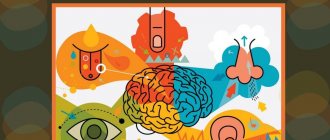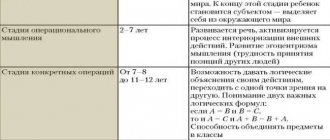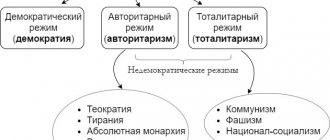- Leadership concept
- Types of Leaders
- Classification according to E. de Bona
- Classification by function
- Difference between a manager and a leader
- Typology of leadership styles
- According to K. Levin (or according to style)
- By nature of activity
- According to M. Weber
⭐️⭐️⭐️⭐️⭐️In modern management, there are different types of leadership (see who a leader is). They are classified by style, type of activity, direction of their influence, etc.
Leadership can take many forms
Manager and leader
What is the difference between two seemingly very similar concepts? To lead is to have the right to make decisions. This feature is not always aimed at instilling authority among the wards. Leadership qualities can be inherent in a person who does not hold a leadership position. This personality is always respected by others. Such a leader is called informal.
People who simultaneously occupy leadership positions and are authoritative leaders succeed best in political activity. A number of qualities indicate the ability to manage. Among them are the following:
- Intelligence.
- Organizational skills.
- Intuition.
- The ability to please the public.
- Willingness to take responsibility.
Political leader through the eyes of Machiavelli
In the work “The Prince” by Niccolò Machiavelli (an Italian philosopher), the requirements for a person who wants to become a successful politician were described in detail. The qualities of a leader in his view look like this:
- Avoid hatred.
- Win people over by instilling trust.
- Create the appearance of virtue in front of the people, regardless of actions.
- Act quickly and firmly if the situation requires it.
- Change your management style based on the situation.
What are leaders like?
In relation to subordinates, managers are divided into authoritarian and democratic. Types of political leadership are class, party and national. Modern political science identifies several collective types. These include the following leaders:
- "Flag Bearer" He is characterized by a special vision and perception of reality. He is also interested in a dream, an ideal that can inspire a large number of people.
- "Servant." He is guided by the needs and demands of his supporters. And his actions are carried out on behalf of voters.
- "Dealer". This type is characterized by the ability to present their ideas attractively. He knows how to convince people that his thoughts and proposals are more tempting than others.
- The “firefighter” acts depending on the situation. He deals with the biggest problems that require immediate action.
Moreover, types of political leadership often have the property of combining these qualities in different proportions. These characteristics are usually not found in their pure form.
Additional materials for this lesson
You can also read useful materials on leadership in the special “Leadership and Relationships” section of our blog. The topic of this lesson is complemented by articles:
- Adizes model: how to become an effective leader
- Fred Fiedler's Model of Effective Leadership
Please also note that some test questions for this lesson, as well as for the leadership exam, are based on the material in the above articles.
Charismatic leader
Leaders who captivate and inspire are charismatic. In this case, we can say that the person is gifted. A charismatic leader looks exceptional and infallible in the eyes of others. He seems to be endowed with some kind of supernatural abilities.
People perceive him with reverence and devotion. That is, such a person is a leader who is blindly trusted and followed. However, such faith is not always associated with the right decisions. His words are perceived and remembered because it was this person who expressed them. Charismatic leadership has the ability to unite followers despite danger.
At the same time, it is not easy for such a person to solve current affairs. Moreover, history has many examples of charismatic leaders turning into dictators.
Democratic leader
The democratic type of leadership, as most researchers believe, is the most preferable. Personalities of this type are respected and intelligent. They are tactful and objective. These qualities manifest themselves when communicating with group members. But such a leader needs much more time to make a decision than an adherent of the authoritarian style. Such a leader listens to the opinions of colleagues and tries to involve people in the formation of decisions. He may disagree with the opinions of his subordinates and, as a result, act in his own way. But such a leader finds it interesting to listen to the opinions of his wards. The fact is that here he is inclined to the possibility of seeing some new solution that could become a fresh trend.
He has nothing against bringing “fresh air” into the organization. Because permanent attitudes tend to become obsolete. Such a leader is able to form new trends based on the opinions of his followers.
Leadership as a socio-psychological category
Leadership is rooted in the nature of man and society. Phenomena similar to leadership are found in animals that usually live in groups. Here the strongest, most intelligent, most persistent and decisive individual always stands out - the leader who leads the herd (flock) according to his unwritten laws, dictated by his relationship with the environment and biologically programmed.
In the human environment, leadership is present everywhere and is always part of human interaction. It occurs in small groups, including microgroups, and in large communities (political leadership).
For many centuries, this phenomenon has been studied by philosophers, sociologists and psychologists. Accordingly, views on the nature of leadership are varied. Some authors believe that the reasons for its occurrence should be sought in the presence of special leadership qualities in a person (“trait theory”). C. Lambroso considers the desire for leadership as paranoia, and 3. Freud and A. Adler - as neurosis. G. Lasswell views leadership as an attempt to compensate for low self-esteem. In addition, this phenomenon is also defined as an attempt to overcome physical inadequacy: Short stature (Napoleon, Hitler); paralysis (F. Roosevelt).
Others insist that leaders are “made” by the people around them (followership theory). A leader is interpreted as a person who most successfully provides leadership to others.
Others believe that leaders are shaped by situations (situational theory). Every situation brings to the fore the people who can solve it.
Finally, another group of scientists believes that leadership is the result of a number of factors (synthetic theory).
In small groups based on direct contacts of its members, there can be no institutionalization of leadership positions. Here are the individual qualities of a person, his ability to unite a group and lead it.
A leader is a member of a small group who is used as a result of the interaction of group members to organize the group in solving a specific task. He or she demonstrates a higher level of activity, participation, and influence in the task than other group members. Thus, the leader is used in a certain situation and takes on certain functions. Other group members accept leadership, that is, they establish a relationship with the leader, implying that he leads and they follow. Leadership must be considered as a group phenomenon: The leader cannot be thought of separately; it is always given as an element of the structure of the group, and leadership is a system of relationships within this structure.
In large associations, the effectiveness of collective actions of which requires clear functional-role differentiation and specialization, as well as operational management and rigidity of subordination, the institutionalization and formalization (registration) of leadership positions endowed with relatively greater powers is mandatory.
An analysis of the nature of leadership shows that it stems from certain needs of people and their associations that leaders must satisfy. Leadership as a special type of management relationship is largely based on the process of psychological influence. This process is much more complex and requires a high degree of interdependence between its participants. Unlike management, leadership implies the presence of followers in the organization, not subordinates. The “superior-subordinate” relationship inherent in the traditional management concept is being replaced by a “leader-follower” relationship.
Leadership is largely characterized by an informal basis (in fact, it is informal leadership). “Management,” writes, in particular, R.L. Krichevsky, is a phenomenon that occurs in a system of formal (or, as they say, official) relations, and leadership is a phenomenon that arises through a system of informal (unofficial) relations. Moreover, the role of a leader is predetermined “on the board” of a social organization, and the scope of the functions of the person performing it is fixed in advance. The role of the manager arises spontaneously; there is no such role in terms of the work of an institution or a company….. Management by its nature is a social phenomenon, and leadership is psychological.”
B. D. Parygin points out the following differences between a leader and a manager: 1) the leader is mainly called upon to regulate interpersonal relationships in the group, and the manager regulates the service relations of the group as a specific social organization; 2) leadership can be stated in the conditions of the microenvironment (which is a small group), while management is an element of the macroenvironment, i.e. leadership is an element of the macroenvironment, i.e. it is connected with the entire system of social relations; 3) leadership arises spontaneously; the leader of any real social group is either appointed or elected, but this process is not spontaneous, but, on the contrary, purposeful and controlled by various elements of the social structure; 4) the phenomenon of leadership is less stable, since the appointment of a leader largely depends on the mood of the group, while leadership is a more stable phenomenon; 5) unlike management, subordinate leadership plays a much more stable role in decision making; 6) the decision-making process of a leader (and in leadership in general) is much more complex and mediated by many different circumstances and considerations that are not necessarily rooted in a specific group, while the leader makes more direct decisions regarding group activities; 7) the leader’s sphere of activity is mainly a small group in which he is a leader; the leader’s sphere of activity is broader, since he represents a small group in a wider social system. . These differences (with some variations) are also mentioned by other authors.
Leadership is a multidimensional social phenomenon. The phenomenon of leadership manifests itself in any more or less organized group that strives to achieve a common goal for the group.
Authoritarian leader
Adherents of the authoritarian style tend to spend a lot of time instructing. It is common for this type of leadership to tell followers exactly what, how and when to do. The authoritarian type of leadership presupposes the presence of a number of followers over whom they extend their power. At the same time, such leaders do not tend to listen to anyone’s advice or opinions. All decisions in an organization or structure are made by only one person. This person does not encourage others to participate in discussions or express any thoughts or wishes.
Types of leadership assume that such a person introduces a number of attitudes into the structure under his charge that require unconditional submission. It is the complete opposite of the style of behavior discussed above. It is strictly forbidden to ignore the set of rules he proposes. All those who disobey are threatened with certain punishment. It is also undesirable to argue with such a person. He knows perfectly well that the boss is always right, and requires his employees to strictly believe in this attitude.
Personality typologies
Types of leadership depend entirely on personality traits, self-esteem and the complexity of the self-concept. According to this theory, there are 4 types of leaders.
- The apolitical type is inherent in a person with high self-esteem and a complicated self-concept. He processes new information and presents it in such a way as not to overstep himself.
- A pragmatic leader has low self-esteem and a complicated self-concept. Behaves in accordance with the conditions of feedback from others. Listens to the opinions of others and takes criticism seriously. He often engages in self-flagellation, convicting himself of mistakes.
- Ideologist - he is characterized by high self-esteem and low complexity of the self-concept. Practically does not react to the problems of others. Focused only on satisfying your needs. Characterized by tough behavior.
- An indeterministic leader - he is characterized by low self-esteem and a low level of self-concept. His leadership styles are based on the influence of certain social factors.
The principle of non-interference
Also interesting is a leader whose actions reflect the principle of non-interference. This style is more progressive than democratic. This leader allows subordinates to make decisions freely. Also, wards have complete freedom in performing tasks that are not limited by the instructions of the supervisor.
But all types of leadership assume that the manager bears final responsibility for decisions made. And the principle of non-interference is no exception. Such a person is not characterized by negligence. He has a clear idea of what his ward actually is. Therefore, such a leader knows perfectly what and in what situation to expect from a subordinate. His task is to correctly distribute responsibilities. After this, you can provide the wards with fairly free conditions, as if only slightly controlling them.
Basic theories
The first theory of leadership is charismatic. Its adherents believed that any individual cannot be a leader. A person must have a certain set of qualities and traits from birth. Subordinating and organizing other people's work is an art, not a science, so learning to be a leader is impossible.
Behaviorists believed that there are certain patterns and character traits that are not only innate, but also acquired through the process of socialization. By studying processes and patterns, experts have discovered more than 200 qualities necessary for successfully leading a group of people. There are cases where a person, without possessing basic leadership talents, coped with the responsibilities of a leader perfectly.
This is how the situational theory was derived.
According to this concept of leadership, managerial qualities awaken in response to a certain situation, that is, they are a means of adaptation of the body.
Western psychologists adhere to a synthetic concept of leadership. According to it, leadership is a way of organizing relationships between a group of people, where the leader is his supervisor. The concept is based on an integrated approach to the consideration of management processes, which are based on 3 components.
- Having leadership qualities.
- Personal characteristics of led people.
- The nature of the situation.
Not only the leader himself influences the people he leads and tries to model the situation. The manifestation of leadership qualities of a certain individual is also influenced by the situation itself and the people around him.
Transformational style
Such a leader tends to use his ideas to inspire other people. This personality is characterized by excellent communication skills. That is, such a person speaks quite clearly to his wards. He expresses his thoughts clearly. It’s not difficult with him, because the team of such a person always knows what he wants.
Types of leadership suggest that such a person tends to delegate his own powers to his wards. He spends a lot of time communicating with his team and gets real pleasure from such pastime. The purpose of such meetings is to raise the collective spirit, unite people, and develop in everyone a sense of the importance of involvement in what is happening.
In addition, the leader draws a lot for himself from such conversations. He understands the thinking of the team, its mood, development trends. This leader is also interested in the emotional side of what is happening. If he observes a lack of enthusiasm in someone, he tries to develop interest.
Flexibility
It should be noted that all these types of leadership and management are not perfect. Therefore, the most successful person is called a “flexible leader.” He is able to combine different types of management, guided by the situation. If it is necessary to introduce an authoritarian or democratic style, a flexible leader chooses the most suitable option. This helps achieve the greatest efficiency. And the need for insight and going beyond standard boundaries leads to the choice of a transformational style.
Guided by the proposed specification, it is easy to determine the personal style or type of your leader in the workplace. Knowing the basic characteristics, you can develop the necessary qualities. In this case, you just need to compare the personal characteristics of behavior and the types of leadership described in the article.
Organizational success
An organization is considered successful if it has achieved its goal. Organizational success criteria:
- survival - the ability to exist as long as possible is the primary goal of most organizations;
- effectiveness and efficiency - according to Peter Drucker, effectiveness is a consequence of the fact that “the right things are done”, and efficiency is a consequence of the fact that “the right things are created”;
- productivity, i.e. the relative effectiveness of the organization has a quantitative expression. It is defined as the number of output units divided by the number of input units. An important element of productivity is quality.











